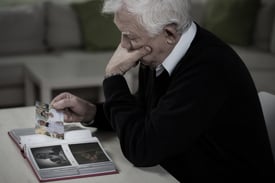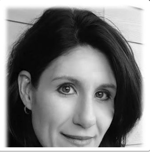A guest post by Bonnie Bright, Ph.D.
You may have donated that Times of Your Life Paul Anka 8-track to charity when it didn’t sell at the last neighborhood rummage sale, but the words to “Good Morning Yesterday” live on. Sometimes it is hard to find the “memories you left behind” as Anka sang in 1976. Sometimes, as Freud argued, those memories sink below the level of our consciousness, but continue to work on us in various ways even decades later. Sigmund Freud even formulated a term “return of the repressed” to explain where neurotic symptoms originate, writing that
illness is characterized by the return of the repressed memories -- that is, therefore, by the failure of the defence.... The re-activated memories, however, and the self-reproaches formed from them never re-emerge into consciousness unchanged: what become conscious as obsessional ideas and affects¹
Jung, too, expressed the opinion that our memories can torment us to a dangerous extent when he wrote,
It may be that the majority of hysterical persons are ill because they possess a mass of memories, highly charged with affect and therefore deeply rooted in the unconscious, which cannot be controlled and which tyrannize the conscious mind and will of the patient.²
You don’t have to be a depth psychologist to notice when, at times, memories of your own rise up unexpectedly out of nowhere, often instigating powerful emotions. It happens for me with a handful of certain memories show up, surprising me with their content and their intensity, making me wonder why a certain memory would arise for me when millions of others are lost.
 This is why I was fascinated to meet Daphne Dodson, a qualitative researcher who has spent the past 20 years interviewing people, who is currently researching and writing about a concept she calls “Memory Tending.” Daphne, who recently completed her Ph.D. in Depth Psychology, specializing in Jungian and Archetypal Studies at Pacifica Graduate Institute, began thinking about the idea of Memory Tending after noticing that her daughter frequently seemed to have different memories of the same experience they had both lived through. As a researcher, Dodson realized that people she interviewed often utilized a memory to relay to Daphne who they were, to paint a picture or convey an image of how they perceive themselves to be. She began to wonder if memories might be “images,” and could be experienced much in the same way as we experience our dreams.
This is why I was fascinated to meet Daphne Dodson, a qualitative researcher who has spent the past 20 years interviewing people, who is currently researching and writing about a concept she calls “Memory Tending.” Daphne, who recently completed her Ph.D. in Depth Psychology, specializing in Jungian and Archetypal Studies at Pacifica Graduate Institute, began thinking about the idea of Memory Tending after noticing that her daughter frequently seemed to have different memories of the same experience they had both lived through. As a researcher, Dodson realized that people she interviewed often utilized a memory to relay to Daphne who they were, to paint a picture or convey an image of how they perceive themselves to be. She began to wonder if memories might be “images,” and could be experienced much in the same way as we experience our dreams.
 Looking at memories as images can be a tool to help us understand who we are and “where we might be going psychologically,” Dr. Dodson believes. The fact that we can each have a different memory of the same lived experience means it creates for each of us own personal psychic material that we can work with, or tend. The beauty of looking at a memory as an image (which in addition to being visual, could also be sound or smell), is that the image can invite us to engage with the way we see certain things of the past. Engaging with memories in an imaginal way enables us to create new relationships and perspectives with those images or stories from the past, resulting in clearing ongoing associated negativity or trauma that makes us stuck, or in amplifying the benefits of positive memories.
Looking at memories as images can be a tool to help us understand who we are and “where we might be going psychologically,” Dr. Dodson believes. The fact that we can each have a different memory of the same lived experience means it creates for each of us own personal psychic material that we can work with, or tend. The beauty of looking at a memory as an image (which in addition to being visual, could also be sound or smell), is that the image can invite us to engage with the way we see certain things of the past. Engaging with memories in an imaginal way enables us to create new relationships and perspectives with those images or stories from the past, resulting in clearing ongoing associated negativity or trauma that makes us stuck, or in amplifying the benefits of positive memories.
 I consider the possibility that memories themselves may evolve as we transform our own relationship to them, much in the same way we humans individuate according to Jung—a self-generating pattern in which, as we change, the memory also transforms itself. Then, the more the memory transforms, the more we do as well. Daphne has a thoughtful response to this. It is important to note that while our memories can indeed change and evolve, she asserts, the original event doesn’t change—just our relationship to it. The original event will always be just as important in shaping who we are because of it. However, if we’re able to step into a memory of an event imaginally through a process like Memory Tending, even negative memories that haunt us can be engaged, allowing us to reshape our relationship to that memory and therefore to our own past self.
I consider the possibility that memories themselves may evolve as we transform our own relationship to them, much in the same way we humans individuate according to Jung—a self-generating pattern in which, as we change, the memory also transforms itself. Then, the more the memory transforms, the more we do as well. Daphne has a thoughtful response to this. It is important to note that while our memories can indeed change and evolve, she asserts, the original event doesn’t change—just our relationship to it. The original event will always be just as important in shaping who we are because of it. However, if we’re able to step into a memory of an event imaginally through a process like Memory Tending, even negative memories that haunt us can be engaged, allowing us to reshape our relationship to that memory and therefore to our own past self.
There is also clinical value to the process of Memory Tending, and Daphne shares some interesting examples from her research about how Memory Tending is helping people transform their lives and the lives of those around them. One therapist she knows has been using the practice in conjunction with EMDR (Eye Movement Desensitization and Reprocessing) which was developed for emotional processing of traumatic memories. In her practice, the therapist uses EMDR to help integrate emotion in the body, and then brings in Memory Tending with the client to work with it imaginally and deepen the EMDR experience.
Daphne suggests an idea that might radical to some, but one that resonates with me personally. A particular memory tends to choose us, she submits. In this way, memories might then be considered an extension of the objective psyche that Jung described so passionately; the collective unconscious or archetypal Self, a field in which we move at all times, and which has our best interest at heart. Dream work is seen similarly in Jungian theory.
Memory Tending could also be an extremely useful for application to the collective, I think. In the midst of the overwhelm we all feel on a regular basis, due not only to a constant inundation of bad news in world, but also perhaps due to what must surely be disenfranchised trauma arising from our terrible history of colonialism in the west, and even memories held in the land.
When I inquire about applying Memory Tending to the collective, Daphne relates how the idea of Memory Tending originated through Dream Tending®³ (a practice developed by Pacifica’s Chancellor, Steve Aizenstat, over 40 years ago). In Dream Tending, as she describes it, one first amplifies dreams as Jung suggested, then engages with them in a transpersonal way, moving to the imaginal where images are seen as having their own wisdom. While Dream Tending doesn’t typically take place on behalf of a group, Daphne points out, she has seen cases where individuals who are present during Dream Tending sessions can get pulled into the experience, almost as if they get caught in the psyche and are there “among” the psyche, so it’s no longer “just an individual experience.” Something similar could potentially take place if it were done around a particular place and with intentionality by a group who sought to create a meaningful practice dedicated to something other than themselves, she muses.
 I think about what Jung referred to as “big” dreams, and how they can often be given to an individual on behalf of the collective. Some indigenous peoples had rituals of gathering in the mornings to share their dreams in order to determine what messages to provide guidance to the tribe. Could certain collective memories choose us so we would do the work of psyche together for collective healing? It’s an intriguing idea.
I think about what Jung referred to as “big” dreams, and how they can often be given to an individual on behalf of the collective. Some indigenous peoples had rituals of gathering in the mornings to share their dreams in order to determine what messages to provide guidance to the tribe. Could certain collective memories choose us so we would do the work of psyche together for collective healing? It’s an intriguing idea.
Anytime one of us is willing to engage in our own personal psychological work, or the work of the land or the greater world and the greater psyche, Daphne affirms, it has a tremendous reach for the anima mundi, the soul of the world, itself. In our conversation, Daphne goes on to address the ethical concerns of Memory Tending, and shares more examples of how it has been instrumental in the process of transformation for many of her case subjects.
In spite of her long career as a researcher, Daphne first developed the idea of Memory Tending while in her doctoral program at Pacifica. She credits her professors there with much of her inspiration. Not only do the professors at Pacifica teach students academically, they also nurture souls, she insists: “Pacifica provides access to that kind of deep understanding of self, others, and the world around us. Pacifica itself holds that much-needed container for growth, not only academically, but on a soul and psychological level as well.”
View research topics from recent and upcoming dissertation defenses at Pacifica.edu - oral defenses.
Listen to the full interview with Dr. Daphne Dodson here (approx. 26 mins)
¹ In "Further Remarks on the Neuro-Psychoses of Defence" in 1896, Freud introduced the idea of "the return of the repressed" as a mechanism that fuels neurotic symptoms.
² C. G. Jung, para 176 in “Cryptomnesia” from his essay, “On the Psychology of So-called Occult Phenomena,” in Collected Works Volume 1.
³ See www.dreamtending.com

Daphne Dodson, Ph.D. is a global qualitative research psychologist primarily conducting studies in the fields of infectious and auto-immune diseases. Her specific areas of interest include cultural psychology, the imagination, and memory. Dr. Dodson’s work will appear in two upcoming publications. Her essay, “Rebirthing Biblical Myth: The Poisonwood Bible as Visionary Art” will be published in Jungian Perspectives on Rebirth and Renewal: Phoenix Rising, a new book from Routledge. “Saying Goodbye to Our Children: A Phenomenon of Soul-Making” will appear Psychological Perspectives, a journal sponsored by the C.G. Jung Institute of Los Angeles.
 Bonnie Bright, Ph.D., is a graduate of Pacifica’s Depth Psychology program, and the founder of Depth Psychology Alliance, a free online community for everyone interested in depth psychologies. She also founded DepthList.com, a free-to-search database of Jungian and depth psychology-oriented practitioners, and she is the creator and executive editor of Depth Insights, a semi-annual scholarly journal. Bonnie regularly produces audio and video interviews on depth psychological topics. She has completed 2-year certifications in Archetypal Pattern Analysis via the Assisi Institute and in Technologies of the Sacred with West African elder Malidoma Somé, and she has trained extensively in Holotropic Breathwork™ and the Enneagram.
Bonnie Bright, Ph.D., is a graduate of Pacifica’s Depth Psychology program, and the founder of Depth Psychology Alliance, a free online community for everyone interested in depth psychologies. She also founded DepthList.com, a free-to-search database of Jungian and depth psychology-oriented practitioners, and she is the creator and executive editor of Depth Insights, a semi-annual scholarly journal. Bonnie regularly produces audio and video interviews on depth psychological topics. She has completed 2-year certifications in Archetypal Pattern Analysis via the Assisi Institute and in Technologies of the Sacred with West African elder Malidoma Somé, and she has trained extensively in Holotropic Breathwork™ and the Enneagram.



